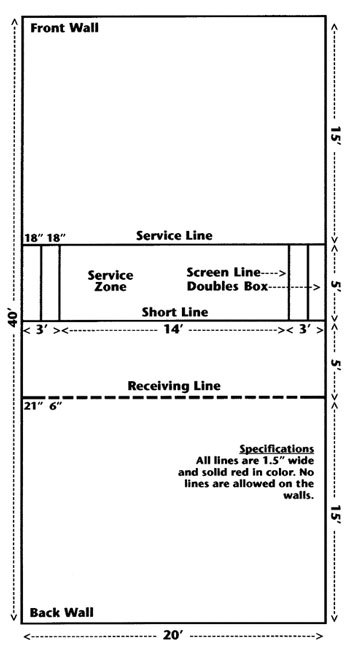Doubles Racquetball Rules
Doubles is a variety of racquetball that allows four people to play the game at the same time. There are two teams of two people and the people stay on each team throughout the whole game (so there’s no rotation, like in Cutthroat). Majority of the regular rules apply to doubles, so I’m only going to point out the differences.
The very beginning of the game is different from the rest in that when the first server is out, the whole team is out. After that, each team member gets to serve one after another until both players are out. For example, if team #1 has players A and B, then player A would keep serving until she is out. Once she is out, it’s called a handout, and player B from the same team would step up and serve until he is out. When that happens, it’s called a side out, and now it players C and D on team #2 get to serve in the similar fashion. But at the beginning of the game, if team #1 gets to serve first, then once player A is out, team #1 is out.
Official rules don’t require for serve rotation order to be established and maintained. That is, it is up to the team to decide which players get to serve first. However, in recreational games it seems people tend to establish an order and stick to it throughout the game. It’s up to you whether to do that or not. The only thing you have to make sure is that after a handout a different player actually goes to serve. Otherwise, it’s called an out-of-order serve, which is a penalty and results in an immediate out for that team.
During serves, the person who is serving stands in the service box and the same rules for serving apply as for singles. The non-serving member of the team has to stand in the doubles box (see court diagram on the left) with the back facing the side wall. That player cannot move out of that position until the served ball passes the short line. A violation of this rule is called a foot fault and service is considered lost.
If the serving player hits the non-serving player who is standing in the doubles box during a serve, this results in loss of serve. Likewise, if during a rally a player hits another player from the same team with the ball, that results in a loss of rally.
During a rally, it’s not required that members of the same team alternate returning the ball in a specific order, so it’s up to the players to decide on a strategy and divide the court or give signals to each other when both are within reach of the ball.
Keep in mind that Doubles typically results in a greater number of hinders being called simply due to the fact you now have four people occupying the same court as for singles. It’s a very fast-paced game and you need to be keenly aware of where all the players are at all times. So these are the rules for playing Doubles in Racquetball, in a nutshell. If you are interested in reading the official US rules, check section 4 of this document.

